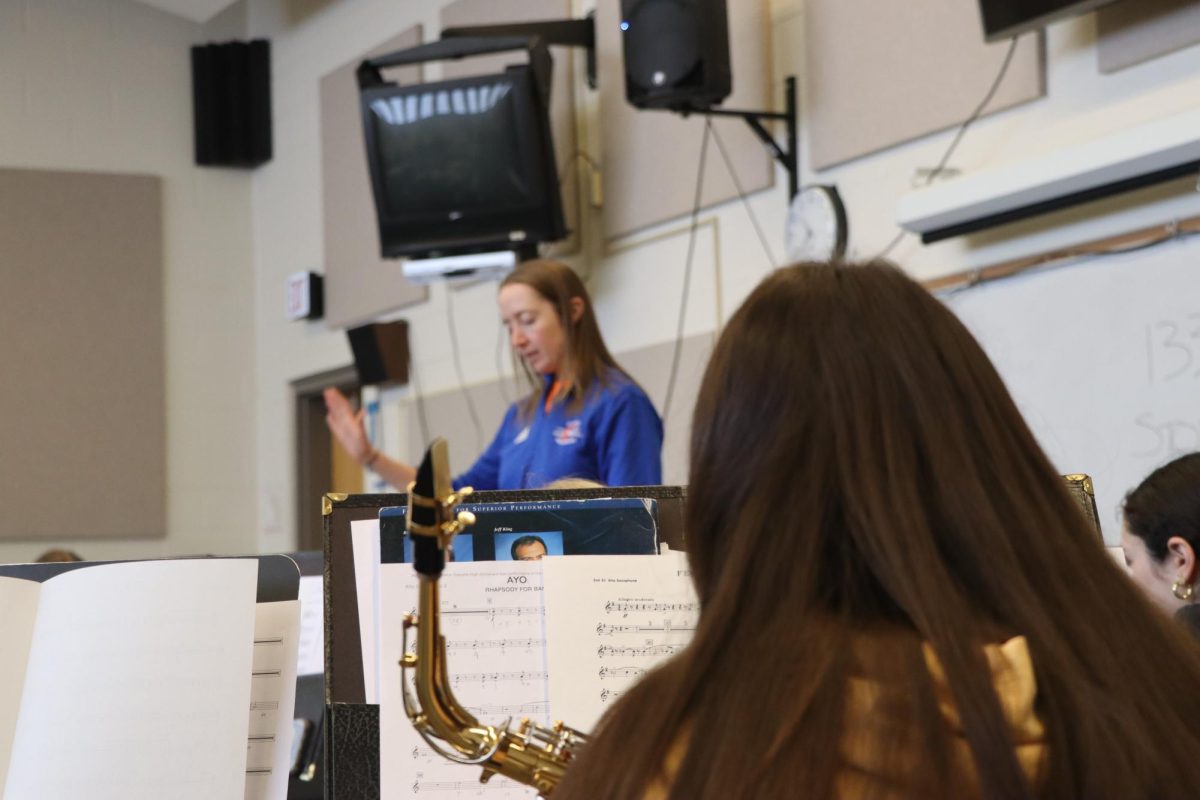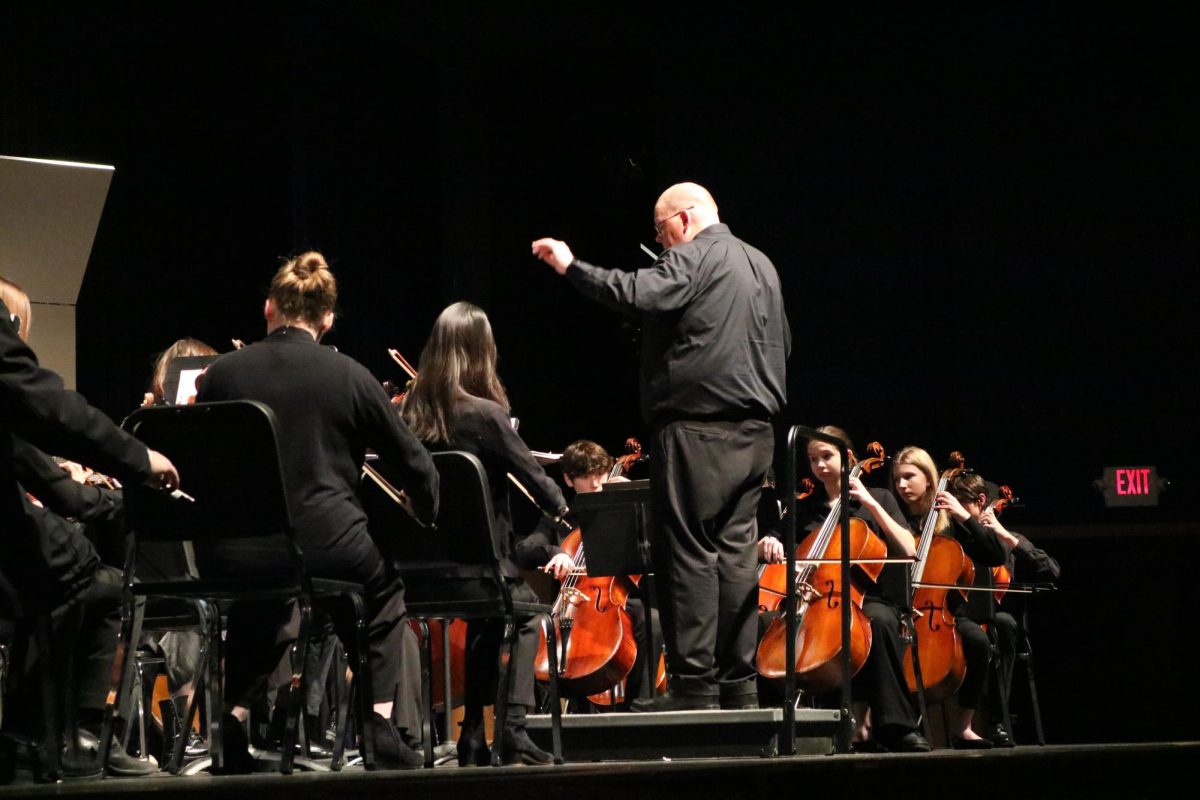For the estimated 70 percent of the CHS student body, math class is not honors—leaving the choice between Core Plus Integrated Math, more commonly known as simply Integrated, or a more traditional route. However, though the former is being touted as the new, “better†way to learn math, some questions, concerns, and anxieties surround its unusual method of teaching math.
Over the decade since Integrated Math was implemented, the course has suffered criticism from a number of parents and students.
However, the majority of the Clayton parents and sources harboring critical opinions of Integrated declined to comment when contacted for this story; the one parent who consented to interview wished to remain anonymous.
Integrated has its share of strong supporters as well, however. Many are teachers and administrators who have firsthand experience with the program, and its effects on students.
Stacy Felps, who currently teaches Integrated 4 and Honors Calculus, has had experience teaching math at CHS before Integrated was adopted. From this perspective, she still keenly supports Integrated.

“I wish my own children could have gone through it,†Felps said. “I think that it gives students a better opportunity for retention. I think that what we see with students from year to year is that they’ve got a different kind of grip on what they learn—they’re linking it to experiences, and their memories are attainable through stories… there’s a memory that’s more than just memorizing steps.â€
Integrated seeks to build math understanding through real-world application. Students in Integrated learn a little of each “section†of math, rather than spending an entire year solely on geometry or algebra, as the other more traditional classes still do.
“The truth of the matter is that’s not how math happens,†CHS Math Department Head David Kohmetscher said. “It’s not like you spend a year studying verbs. It makes no sense. What Integrated does is takes contexts, problem-solving situations, and you learn the math behind it.â€
And for some, this works just as planned.
“The fact that this class is applied to the real world makes it easier for me to learn,†senior Harmony Idleburg, who has been through the previous parts of the sequence, and currently takes Integrated 4, said. “I do think the real world way of learning helps way more because it’s not like teaching something completely new. I can have something in life that I understand fully and apply whatever I’m learning in class to it, and that way I remember whatever I just learned for the next quiz, test or even the semester final.â€
Integrated isn’t only unconventional in the order of the material taught, but in the mindset that came with it. Clayton adopted the Core Plus series with the intention of it being solely a teaching resource. Teachers are expected to add their own supplements, such as extra worksheets, to their lessons, aiming for better student understanding.
“The text is never the course curriculum,†Assistant Superintendent Dottie Barbeau said, “Just a resource to help you teach.â€
Because of this radically different approach to math, many parents are understandably wary.
According to Heidi Shepard, the Math Coordinator and District Assessment Director for the Clayton Schools, the implementation of Integrated was not meant to confuse, but to “demystify mathâ€.
“When we piloted the [Core Plus] text series, we saw the power that it had, as far as building understanding for students,†Shepard said.
Kohmetscher agrees.
“What a significant amount of research shows, from countries that do significantly better than us on international math tests, is that it is a better way to learn math,†Kohmetscher said.
However, parents also complain that they are uninformed of the choice of traditional math route as well, and that their children entered Integrated without knowing what it was, locking them into the system. The reasoning for this is the fact that Integrated is Clayton’s recommended course, thus overshadowing the traditional math program.
“[Integrated] just showed up on the schedule,†said the anonymous parent. “When I questioned [my child] being in it, I was told, ‘This is where he needs to be.’ We were never told about the traditional option by the school… Were I to choose now, I would have placed him in the traditional sequence.â€
Cases such as this become a problem when the issue of class placement comes up; another frequently heard objection to Integrated pertains to the rigid separation of the math tracks, which are taught at such different orders and speeds (in the case of Honors) that switching between tracks is a complicated task often frowned upon by teachers.
“To me, that’s another one of the arguments that a lot of parents throw out there to try and throw a wrench in Integrated,†Kohmetscher said. “It’s never easy to switch tracks… that’s the concept of a track. You set out a path and lay out the pieces, like puzzle pieces, and if you’ve got two parallel tracks, moving between them is going to cause gaps.â€
The website www.claytonmathmatters.com, hosted by Marguerite Bliss, who played a major role in the implementation of the CHS Traditional math track (also known as the “Alternative†track) five years ago, and Andrea Maddox-Dallas, seeks to spread community knowledge of these alleged “math issuesâ€, as well as awareness of the choice between Integrated and Traditional.
In addition, according to the website’s mission statement, the aim is to also “provide supporting evidence that Core Plus Integrated Math is not the proper solution to improving high school math education.â€
The site offers several links to similar websites, from other cities around the country, reflecting the fact that the battle over math curricula is not an exclusively Clayton-based phenomenon.
In addition, the site offers extensive input from Clayton parents, CHS alumni who had the Integrated track, and even professors, all offering their opinions on Integrated. All but the professors are anonymous.
“[An] advantage is that the problems and general ideas of what we were learning were presented in ways that we could relate to our lives,†one source, identified only as ‘CHS Graduate, 2006’, said on the site. “Sadly, I think they need another year to do it. I say this because I did not feel sufficiently prepared for the math sections of the SAT or ACT.â€
Idleburg disagrees.
“I felt very prepared for the math section in the SAT that I took last summer,†Idleburg said.
However, like the anonymous student, many other parents and students are also under the impression that those who take Integrated are at a disadvantage when it comes to the ACT. In reality, this is not the case.
“When we first started Integrated, fewer students took the ACT, because the district didn’t pay for it,†Shepard said. “But even though we’ve more than doubled the students that take the ACT, we’ve kept the same strong scores.â€
This includes the scores within the Integrated program as well. Shepard looks at both the overall scores, and the individual math track scores as well, to make sure that all students are making progress.
An added perk of Integrated is that, according to Kohmetscher, reading scores on standardized tests actually improved, due to the heavy reading and communication emphasis in the track.
However, he said, Integrated was actually adopted by Clayton to improve progress that can’t necessarily be measured through a test.
“The whole concept of Integrated wasn’t necessarily to improve test scores,†Kohmetscher said. “The standardized tests that we give really don’t tend to measure critical thinking and problem solving skills. They measure rote skills. Now, Integrated was never invented to help improve kids’ rote skills.â€
He added that though rote skills are not emphasized over problem solving, they are not meant to be neglected, either.
“My teacher introduces us to the formulaic way of it, and then she uses something that we encounter everyday so that we can understand whatever we’re learning better,†Idleburg said. Thus, the “formulaic†parts of math are not lost, just introduced in a different manner.
In addition, Felps said, many students who have gone through the Integrated sequence have returned to say that even in college, their old notes are still relevant and are still of help.
Though Integrated is backed by teachers, administration, and students who take it, its one problem is still the rumors that surround it. Many parents are deterred from Integrated based on falsehoods, such as the issue with switching between tracks which Kohmetscher deems a “false argumentâ€, or that Integrated students are at a disadvantage when taking the ACT, which the statistics prove untrue as well.
“I know there are a lot of myths and things floating around,†Felps said. “But if anybody is concerned, I really, really wish that they would bring it up instead of being quiet, or uncomfortable, or feeling like they just don’t know something. I wish that they would ask us, because we could show them what we know.â€
For the majority of CHS students, despite the doubt-fuelled rumors, Integrated is, for now, the teacher-recommended way to go. According to Barbeau, it “weaves together†the rote aspects of a traditional course and the “real world†application needed in society.
“The world is becoming a smaller place,†Barbeau said. “[We think] about what’s best for the student… We’re preparing kids to be competitive wherever they go.â€






